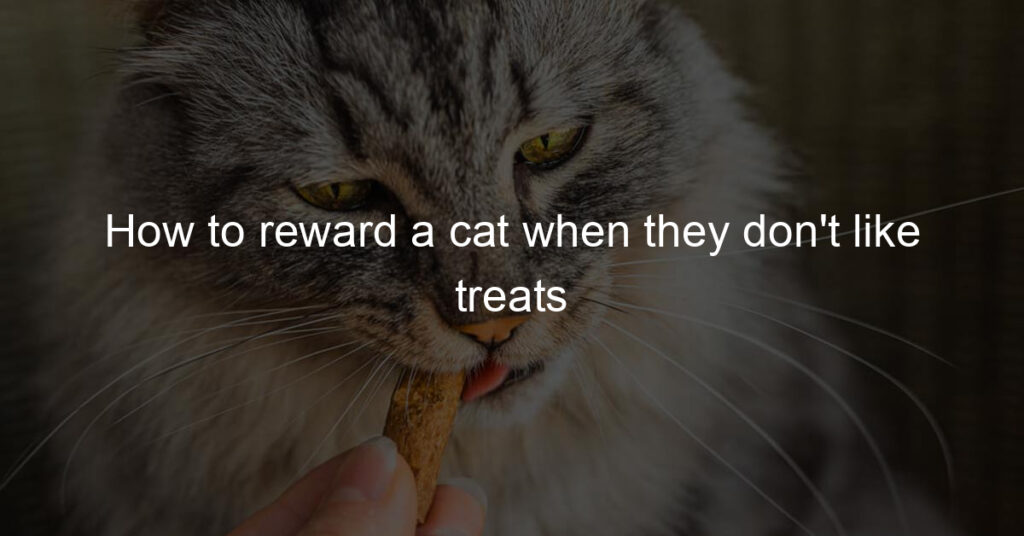We all know how important it is to reward good behavior in our pets. But what do you do when your cat doesn’t seem interested in treats? Here are a few ideas to get those kitty brains working for a chance at a tasty treat!
How do I reward my cat?
Rewarding your cat is an important part of its development and can help your kitty to develop positive behaviors. The best way to give rewards to cats is with food, treats, or a toy, as these are the ways that will naturally grab their attention.
When you are giving a reward it is important to show your cat that you are providing the item in exchange for good behavior or desired action. Praise such as petting them gently or speaking in a friendly tone can also be an effective reward.
Remember that giving too many rewards at once can be counterproductive, so try to pair each reward with specific behavior and provide it consistently. Ultimately, make sure to give your cat plenty of love and attention as this form of reward has tremendous value.
Do cats understand reward and punishment?
Studies have shown that cats can link reward and punishment with behavior. For example, cats can learn to understand which behavior will earn them rewards or punishments by observing the reward or punishment linked with it; they demonstrate this understanding by either repeating the rewarded behaviors or avoiding the punished ones.
Some studies also suggest that cats may even use human facial expressions to interpret rewards as positive or negative reinforcement. It appears that cats can learn from both positive and negative reinforcement, reacting appropriately to either one depending on the situation.
Ultimately, cats can understand reward and punishment just like any other animal with the added advantage of being able to read a human’s face for cues.
What can I give my cat instead of treats?
Some cats enjoy treats, but it can be a challenge to find treats that are healthy and keep them from overeating. Consider trying interactive toys instead! The variety of cat toys available allows for a lot of playtime to keep your pet moving and learn new skills. Puzzle feeders have the added benefit of enhancing their problem-solving abilities and providing mental stimulation during treatment time.
For cats who love water, there are also floating feeders that have kibble bobbing on top of the surface, perfect for cats who like to paw or dive at their food! And if you don’t want to invest in a lot of equipment, chasing strings, ribbons, and feathers around the house with your cat is always a fun activity!
Find which solution works best for you and your furry friend—because having an enriched environment and lots of physical activity will most certainly keep your cat healthy and happy.
How do you trick a cat into eating treats?
The cat’s love of treats is well-known. Unfortunately, they don’t always jump at the chance to eat them. If you’re looking for a way to get your furry companion on board with treats, it helps to use some sneaky tricks.
One approach is to hide the treat somewhere that they’ll have to work hard to find; use their curiosity and sense of exploration to your advantage by placing them behind an object or in a tricky spot that your cat has access to. You could also add some wet food or yogurt mixed into the treated powder, making it an irresistible reward that’s too good for them not to gobble up.
Finally, give your cat one piece at a time, so that the reward never runs out and stays fresh in their mind with each piece you hand out – this can be especially effective if you want to train your felines!
Why do some cats not like treats?
Cats are notoriously finicky when it comes to their dietary habits, so it’s not really surprising that some cats don’t enjoy treats. It might be because they don’t think the treats are tasty enough, or they aren’t interested in trying something new.
Additionally, cats have sensitive stomachs and digestion, so certain ingredients can make them sick and thus put them off treats in general. Ultimately, the main reason why some cats don’t like treats is probably that we just haven’t found the right one yet.
With patience and experimentation, you may be able to find an option your kitty will enjoy – turning treat time into a moment of joy for both of you!
Wrap-up
To conclude, rewarding your cat when they do something good and improving their behavior doesn’t have to mean treats. Cats can be rewarded with cuddles and verbal cues, which often elicit just as much gratification in cats.
Furthermore, you should also recognize when activities are a reward on their own – such as running around outside or exploring a part of the house they haven’t experienced before.
Therefore, it’s important to keep your cat both mentally stimulated and enriched through playtime to help them enjoy rewards like food even more. That way not only will your cat develop healthier habits, but most importantly you will gain their trust which is the ultimate reward for any pet owner!








